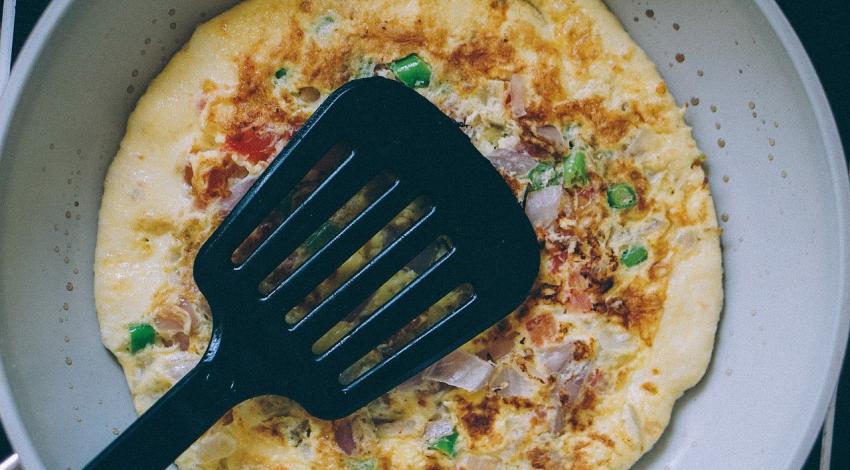Spanish omelette - a ten step guide
omelette

1 Introduction
The Spanish omelette, or tortilla española, is a quintessential dish of Spain. Made primarily from eggs and potatoes, it is hearty enough for a main course yet simple enough to serve as a tapa. This guide expands on the traditional ten-step method, providing historical context, technique tips, and variations that will help you master this versatile meal.
2 Historical Background
The origins of the Spanish omelette date back to at least the early 19th century. Legend has it that during the Carlist Wars, resourceful soldiers combined eggs and potatoes to create a filling dish from limited provisions. Over time, the tortilla evolved into a staple of Spanish cuisine, gracing family tables and tapas bars alike. Today, each region has its own take—some include onions, others chorizo or vegetables—but the basic combination of eggs and potatoes remains constant.
3 Utensils Needed
- Large non-stick skillet
- Mixing bowl
- Cutting board and knife
- Spatula or wooden spoon
- Plate for flipping the omelette
A quality skillet with sloped sides will make it easier to slide and flip the omelette without breaking it.
4 Ingredients
- 6 large eggs
- 500 g potatoes, peeled and diced
- 1 medium onion, thinly sliced
- 4 tablespoons olive oil
- 1 tablespoon butter
- 3 oz chopped ham (optional)
- Salt and pepper to taste
Feel free to omit the ham for a vegetarian version or add bell peppers for color. The ratio of eggs to potatoes can be adjusted according to how thick you like your omelette.
5 Step-by-Step Method
- Cook the Potatoes: Heat half the olive oil in the skillet and add the diced potatoes. Cook over medium heat until tender and lightly golden, about 10 minutes.
- Sauté the Onion: Add the sliced onion and cook until soft and translucent.
- Beat the Eggs: In a mixing bowl, whisk the eggs with salt and pepper. Stir in the cooked potatoes, onions, and ham if using.
- Preheat the Pan: Wipe the skillet clean and add the remaining olive oil and butter. Heat over medium-low.
- Pour and Stir: Pour the egg mixture into the skillet, stirring gently for the first minute to distribute the ingredients evenly.
- Cook Slowly: Let the omelette cook undisturbed until the edges start to set and the center is mostly firm.
- Flip Carefully: Place a plate over the skillet and invert the omelette onto the plate. Slide it back into the pan to cook the other side.
- Finish Cooking: Continue cooking until the omelette is fully set but still moist inside.
- Rest Briefly: Remove from heat and let it rest for a couple of minutes to firm up.
- Serve Warm or Cold: Slice into wedges and enjoy on its own or with crusty bread.
6 Pros and Cons of Homemade Tortilla
Pros: Making the omelette yourself allows you to customize fillings and control the level of doneness. Homemade versions contain no preservatives and showcase the natural flavors of eggs and potatoes.
Cons: The flipping step can be intimidating for beginners. Achieving the perfect texture requires practice—overcooking leads to a dry omelette, while undercooking leaves it runny in the middle.
7 Variations
\n## Serving Suggestions\n\nEnjoy tortilla slices as part of a tapas platter with olives, cheese, and crusty bread. It also makes a satisfying lunch when paired with a simple green salad. Some Spaniards enjoy it cold, tucked into a baguette for an on-the-go snack.\n\nLeftover omelette keeps well in the refrigerator and can be reheated gently or eaten at room temperature. Cut it into cubes and skewer with roasted peppers for an easy appetizer at your next gathering.\n
- Replace the ham with chorizo for a smoky kick.
- Add diced bell peppers or spinach for extra color and nutrients.
- Slice the finished omelette into small squares and secure with toothpicks for an easy party snack.
8 Conclusion
A well-executed Spanish omelette highlights the beauty of simple ingredients transformed through careful technique. By following these steps and experimenting with optional additions, you can prepare a tortilla that rivals those served in Spanish cafés. Enjoy it warm for breakfast or at room temperature as part of a tapas spread.